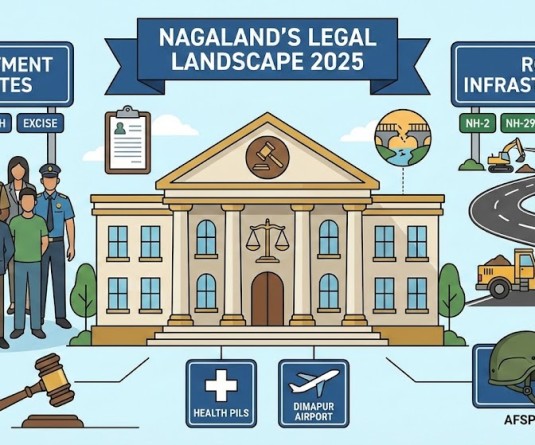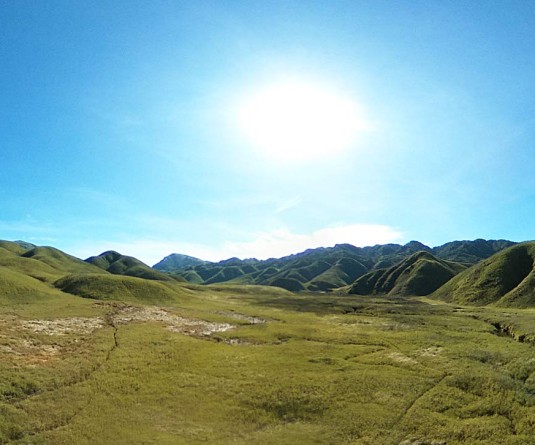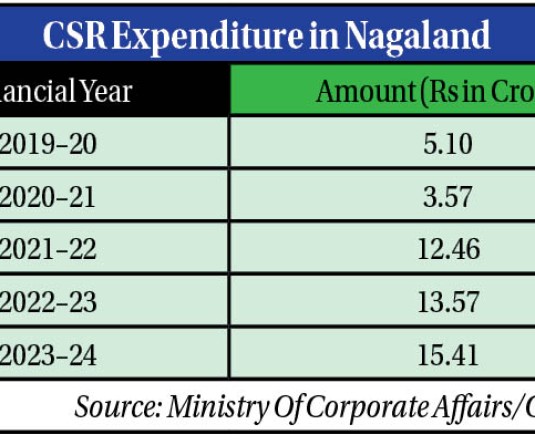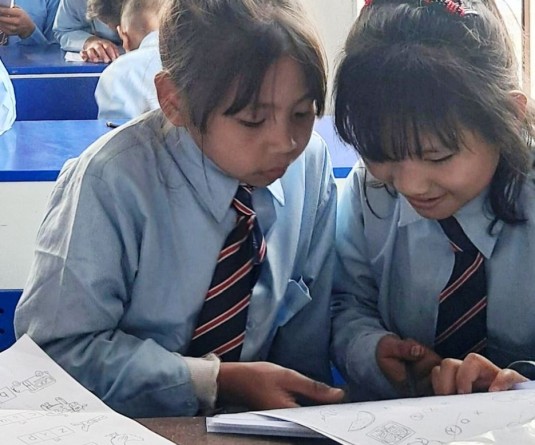‘Belongings of our Ancestors’: Photo Exhibition of Funerary Artefacts from the Naga Collection at the Pitt Rivers Museum. Curated by Naga anthropologist, Dr Dolly Kikon “Belongings of our Ancestors” exhibition was put up by the Forum for Naga Reconciliation (FNR) and Restore, Recover and Decolonise (RRaD) for the September Dialogue held on September 6 in Dimapur, Nagaland. (Morung File Photo)
Yarden Jamir
Mokokchung | September 22
For some, the Naga repatriation journey is spiritual. For others, it is cultural, emotional, or even political. Yet across these different perspectives runs a common thread: the return of ancestral remains and artefacts represents not only a reclaiming of what was taken but also an act of healing, dignity, and unity.
For many Nagas, it is also about finding common ground in a fractured history. Four voices from Mokokchung, speaking after the Morung Lecture XXII on “Healing and Wholeness through Repatriation: A Naga Perspective,” shared what this journey means to them. For T Imsunaro Ao, Associate Professor and Head of the English Department at Fazl Ali College, the repatriation journey is deeply personal.
“It feels like bringing back a part of ourselves that was taken away,” she said. “It is a way of honouring our forefathers, restoring dignity to their memory, and healing some of the wounds of our past.”
She described the ancestral remains and artefacts as “treasures of our heritage” that carry the stories, faith, and identity of the Naga people. “They rightfully belong here at home,” she emphasized.
Acknowledging a question that lingers for many, “Why only now, after so many years?”she responded with faith, “I believe this process is guided by God’s timing, reminding us that He cares about the stories and struggles of our people. In His time, healing, restoration, and hope will come.”
Generationally younger but no less passionate, Supongwaden I Jamir, a first-semester Philosophy student, framed the journey as both spiritual and cultural.
“Everyone has the right to come back to their motherland and lay to rest,” he said. “It would be disrespectful on our part if we do nothing to bring them home.”
For him, the return of ancestors is not only about dignity but also about remembrance. “We will not let our brothers or sisters, fathers or mothers, sons or daughters be forgotten in a foreign land.”
Supongwaden also sees in repatriation an opportunity to re-educate Naga youth. “It reminds us who we are. It teaches us to stand with honour and dignity—not as an Ao, Angami, Lotha, Chang, or any other tribe, but together as a Naga.”
From a historian’s standpoint, Dr Obendangla, Assistant Professor at People’s College, Mokokchung, reflected on repatriation as “a profound reconnection with our ancestral heritage, a reaffirmation of cultural identity, and an act of honouring the legacy of our forebears.”
She noted that colonial collectors often saw Naga objects and remains as specimens, stripping them of meaning and humanity. Repatriation, she argued, reverses this. “It safeguards intangible heritage, fosters a shared sense of belonging, and reinforces pride in who we are.”
For her, the return of ancestors is not only about paying respect to the past but also about nurturing the future. “It nurtures future generations’ understanding of their historical roots and provides a foundation for unity and healing.”
For P Witpong Konyak, a third-semester Political Science student, repatriation is inseparable from justice. “It is about more than just bringing back physical remains, it is a deep cultural, spiritual, and emotional process aimed at healing historical wounds, restoring our dignity, and reclaiming our identity,” he said.
He pointed out that the British took these remains without consent. “Their return is therefore a vital act of reclaiming what was unjustly lost.”
Witpong also emphasized the collective power of the process. “Repatriation can profoundly strengthen our unity. It encourages collaboration across tribes, organizations, and institutions, embodies principles of restorative justice, and paves the way for a more cohesive future.”The Pitt Rivers Museum in Oxford, United Kingdom, holds one of the world’s largest Naga collections, with more than 6,400 objects and 219 human remains. Of these, 44 skeletal remains are now stored and await formal repatriation to respective Naga communities. The ongoing repatriation process is being spearheaded by the Forum for Naga Reconciliation (FNR) and Recover, Restore, and Decolonise (RRaD).
As the remains wait in boxes in Oxford, Nagas are also unpacking deeper questions of memory, dignity, and belonging. Repatriation, for many, is not just about correcting colonial wrongs but about reimagining a shared future—one where the past is acknowledged, wounds are healed, and unity is strengthened.
As Imsunaro put it, “This journey of repatriation is not just about returning what was lost. It is a call for unity, a reminder that our voices are stronger when joined together as one.”
Supongwaden echoed the same sentiment, “Repatriation is not only about the dead. It is about the living, about teaching us to stand as one people.”






